“The Earth As Seen From The Moon.” The Young Astronomer; Or, Helps To A Knowledge Of The Leading

“The earth as seen from the moon.” The young astronomer; or, Helps to a knowledge of the leading constellations. 1891.
More Posts from Hannahhaifisch and Others


Beautiful Geometric Skeletons of Ancient Jellyfish Fossils
The 520-million-year-old fossils reveal that ancient comb jellies had stunning geometric skeletons that have disappeared over the course of evolution, researchers report in a paper published in the journal Science Advances. These strange skeletons contained eight rigid plates that surrounded the jellies’ organs and eight spoke-like structures that radiated outward to surround the soft lobes of their bodies.
The unusual symmetry of these skeletons makes them aesthetically appealing, but it also likely provided mechanical support for the jellies’ squishy bodies. It may have aided in defense against predators or other dangers as well, the researchers suggest.
entire article on techtimes

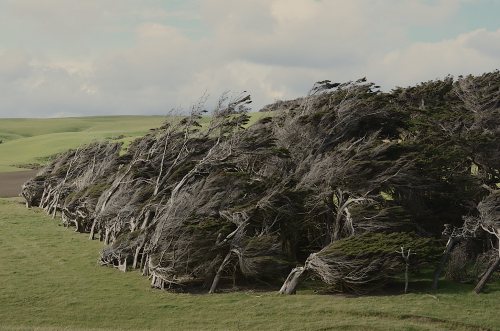



slope point, the southernmost tip on new zealand’s south island, is hit with such persistently violent southern antarctic winds that trees grow in the leeward direction. (click pic or link for credit x, x, x, x, x, x)





Fluorite and Baryte
Locality: Berbes, Asturias, Spain

There are 27 straight lines on a smooth cubic surface (always; for real!)
This talk was given by Theodosios Douvropoulos at our junior colloquium.
I always enjoy myself at Theo’s talks, but he has picked up Vic’s annoying habit of giving talks that are nearly impossible to take good notes on. This talk was at least somewhat elementary, which means that I could at least follow it while being completely unsure of what to write down ;)
——
A cubic surface is a two-dimensional surface in three dimensions which is defined by a cubic polynomial. This statement has to be qualified somewhat if you want to do work with these objects, but for the purpose of listening to a talk, this is all you really need.
The amazing theorem about smooth cubic surfaces was proven by Arthur Cayley in 1849, which is that they contain 27 lines. To be clear, “line” in this context means an actual honest-to-god straight line, and by “contain” we mean that the entire line sits inside the surface, like yes all of it, infinitely far in both directions, without distorting it at all.

(source)
[ Okay, fine, you have to make some concession here: the field has to be algebraically closed and the line is supposed to be a line over that field. And $\Bbb R$ is not algebraically closed, so a ‘line’ really means a complex line, but that’s not any less amazing because it’s still an honest, straight, line. ]
This theorem is completely unreasonable for three reasons. First of all, the fact that any cubic surface contains any (entire) lines at all is kind of stunning. Second, the fact that the number of lines that it contains is finite is it’s own kind of cray. And finally, every single cubic surface has the SAME NUMBER of lines?? Yes! always; for real!
All of these miracles have justifications, and most of them are kind of technical. Theo spent a considerable amount of time talking about the second one, but after scribbling on my notes for the better part of an hour, I can’t make heads or tails of them. So instead I’m going to talk about blowups.
I mentioned blowups in the fifth post of the sequence on Schubert varieties, and I dealt with it fairly informally there, but Theo suggested a more formal but still fairly intuitive way of understanding blowups at a point. The idea is that we are trying to replace the point with a collection of points, one for each unit tangent vector at the original point. In particular, a point on any smooth surface has a blowup that looks like a line, and hence the blowup in a neighborhood of the point looks like this:

(source)
Here is another amazing fact about cubic surfaces: all of them can be realized as a plane— just an ordinary, flat (complex) 2D plane— which has been blown up at exactly six points. These points have to be “sufficiently generic”; much like in the crescent configuration situation, you need that no two points lie on the same line, and the six points do not all lie on a conic curve (a polynomial of degree 2).
In fact, it’s possible, using this description to very easily recover 21 of the 27 lines. Six of the lines come from the blowups themselves, since points blow up into lines. Another fifteen of them come from the lines between any two locations of blowup. This requires a little bit of work: you can see in the picture that the “horizontal directions” of the blowup are locally honest lines. Although most of these will become distorted near the other blowups, precisely one will not: the height corresponding to the tangent vector pointing directly at the other blowup point.
The remaining six points are can also be understood from this picture: they come from the image of the conic passing through five of the blowup points. I have not seen a convincing elementary reason why this should be true; the standard proof is via a Chow ring computation. If you know anything about Chow rings, you know that I am not about to repeat that computation right here.
This description is nice because it not only tells us how many lines there are, but also it roughly tells us how the lines intersect each other. I say “roughly” because you do have to know a little more about what’s going on with those conics a little more precisely. In particular, it is possible for three lines on a cubic surface to intersect at a single point, but this does not always happen.
I’ll conclude in the same way that Theo did, with a rushed comment about the fact that “27 lines on a cubic” is one part of a collection of relations and conjectured relations that Arnold called the trinities. Some of these trinities are more… shall we say… substantiated than others… but in any case, the whole mess is Laglandsian in scope and unlikely even to be stated rigorously, much less settled, in our lifetimes. But it makes for interesting reading and good fodder for idle speculation :)
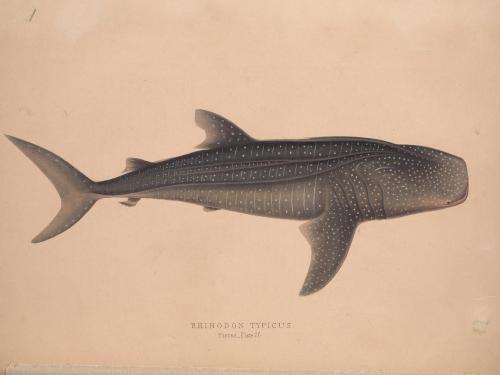




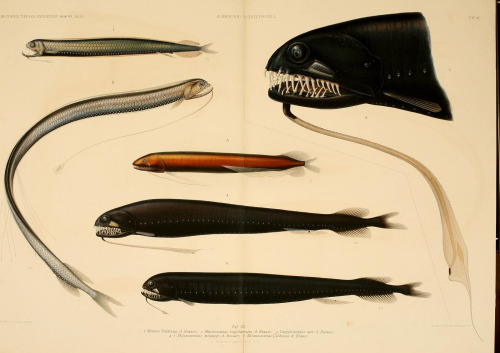
June 8th is World Oceans Day - a day to celebrate the oceans that connect and sustain all of us. Our colleagues at the Biodiversity Heritage Library have been leading up to today with a series of blog posts exploring historic publications that mark important milestones in the progress of marine bioscience research and ocean exploration.
Top image: Whale shark from Illustrations of the zoology of South Africa… v.4 (1845) Middle top : radiolarians and jellyfish from Ernst Haeckle’s Kunstformen der Natur (1904) Middle bottom: giant squid from Cassell’s Natural History v.5-6 and cuttlefish from Voyage de la corvette l'Astrolabe Mollusques and Zoophytes Atlas (1833) Bottom: deep sea fish from Valdivia Expedition…1898-1899. Bd. 15, T. 1
Sand and water make a remarkable team when it comes to building. But the substrate – the surface you build on – makes a big difference as well. Take a syringe of wet sand and drip it onto a waterproof surface (bottom right), and you’ll get a wet heap that flows like a viscous liquid. Drop the same wet sand onto a surface covered in dry sand (bottom left), and the drops pile up into a tower. Watch the sand drop tower closely, and you’ll see how new drops first glisten with moisture and then lose their shine. The excess water in each drop is being drawn downward and into the surrounding sand through capillary action. This lets the sand grains settle against one another instead of sliding past, giving the sand pile the strength to hold its weight upright. (Video and image credit: amàco et al.)


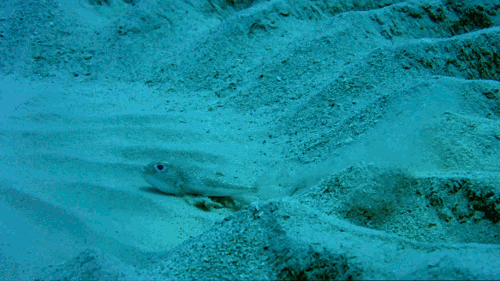
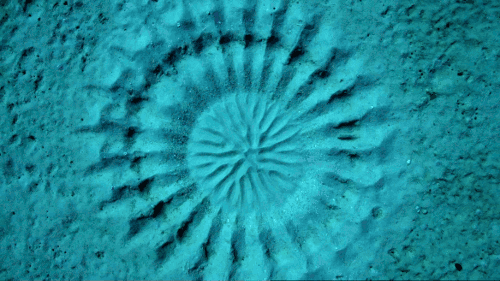
A small Japanese puffer fish is the creator of one of the most spectacular animal-made structures. To impress the female puffer fish, the male labors 24 hours a day for a week to create a pattern in the sand. If the female finds his work satisfactory, she allows him to fertilize her eggs. She then lays them in the middle of the circle, leaving the male to guard the eggs alone.
Life Story (2014)

#SCOPENewYork 2016 | Exhibitor Highlight | Nil Gallery - Booth B05
[Ardan Ozmenoglu, Olive Tree, 2008, paint on glass, 31 x 31 in.]
@ardanozmenoglu
Find out more at SCOPE-ART.COM
-
 a495com reblogged this · 1 year ago
a495com reblogged this · 1 year ago -
 oculus-de-malus reblogged this · 2 years ago
oculus-de-malus reblogged this · 2 years ago -
 oculus-de-malus liked this · 2 years ago
oculus-de-malus liked this · 2 years ago -
 byfafy reblogged this · 3 years ago
byfafy reblogged this · 3 years ago -
 byfafy liked this · 3 years ago
byfafy liked this · 3 years ago -
 ohneweiterebedeutung liked this · 3 years ago
ohneweiterebedeutung liked this · 3 years ago -
 autodidactadelavida reblogged this · 3 years ago
autodidactadelavida reblogged this · 3 years ago -
 autodidactadelavida liked this · 3 years ago
autodidactadelavida liked this · 3 years ago -
 samuli66 liked this · 3 years ago
samuli66 liked this · 3 years ago -
 rewritechinchilla reblogged this · 3 years ago
rewritechinchilla reblogged this · 3 years ago -
 rewritechinchilla liked this · 3 years ago
rewritechinchilla liked this · 3 years ago -
 jcamilov06 reblogged this · 3 years ago
jcamilov06 reblogged this · 3 years ago -
 jcamilov06 liked this · 3 years ago
jcamilov06 liked this · 3 years ago -
 rustedskyprisms reblogged this · 3 years ago
rustedskyprisms reblogged this · 3 years ago -
 rustedskyprisms liked this · 3 years ago
rustedskyprisms liked this · 3 years ago -
 marlsborohaven reblogged this · 3 years ago
marlsborohaven reblogged this · 3 years ago -
 akmethings liked this · 7 years ago
akmethings liked this · 7 years ago -
 dreamsequence9000 liked this · 7 years ago
dreamsequence9000 liked this · 7 years ago -
 toywave reblogged this · 7 years ago
toywave reblogged this · 7 years ago -
 hatshepsut9 liked this · 7 years ago
hatshepsut9 liked this · 7 years ago -
 im-a-mother-fucking-bald-eagle reblogged this · 7 years ago
im-a-mother-fucking-bald-eagle reblogged this · 7 years ago -
 adddmg liked this · 7 years ago
adddmg liked this · 7 years ago -
 xo-96 liked this · 7 years ago
xo-96 liked this · 7 years ago -
 micachuu liked this · 7 years ago
micachuu liked this · 7 years ago -
 minuitnocturne liked this · 7 years ago
minuitnocturne liked this · 7 years ago -
 yrbodyisnothing reblogged this · 7 years ago
yrbodyisnothing reblogged this · 7 years ago -
 godlovesdykes liked this · 7 years ago
godlovesdykes liked this · 7 years ago -
 justarandomone reblogged this · 7 years ago
justarandomone reblogged this · 7 years ago -
 sinnephi liked this · 7 years ago
sinnephi liked this · 7 years ago -
 ansatsu-sha reblogged this · 7 years ago
ansatsu-sha reblogged this · 7 years ago -
 ansatsu-sha liked this · 7 years ago
ansatsu-sha liked this · 7 years ago -
 aspidistra-obscura liked this · 7 years ago
aspidistra-obscura liked this · 7 years ago -
 sasparillagodzilla reblogged this · 7 years ago
sasparillagodzilla reblogged this · 7 years ago -
 kaleyem reblogged this · 7 years ago
kaleyem reblogged this · 7 years ago